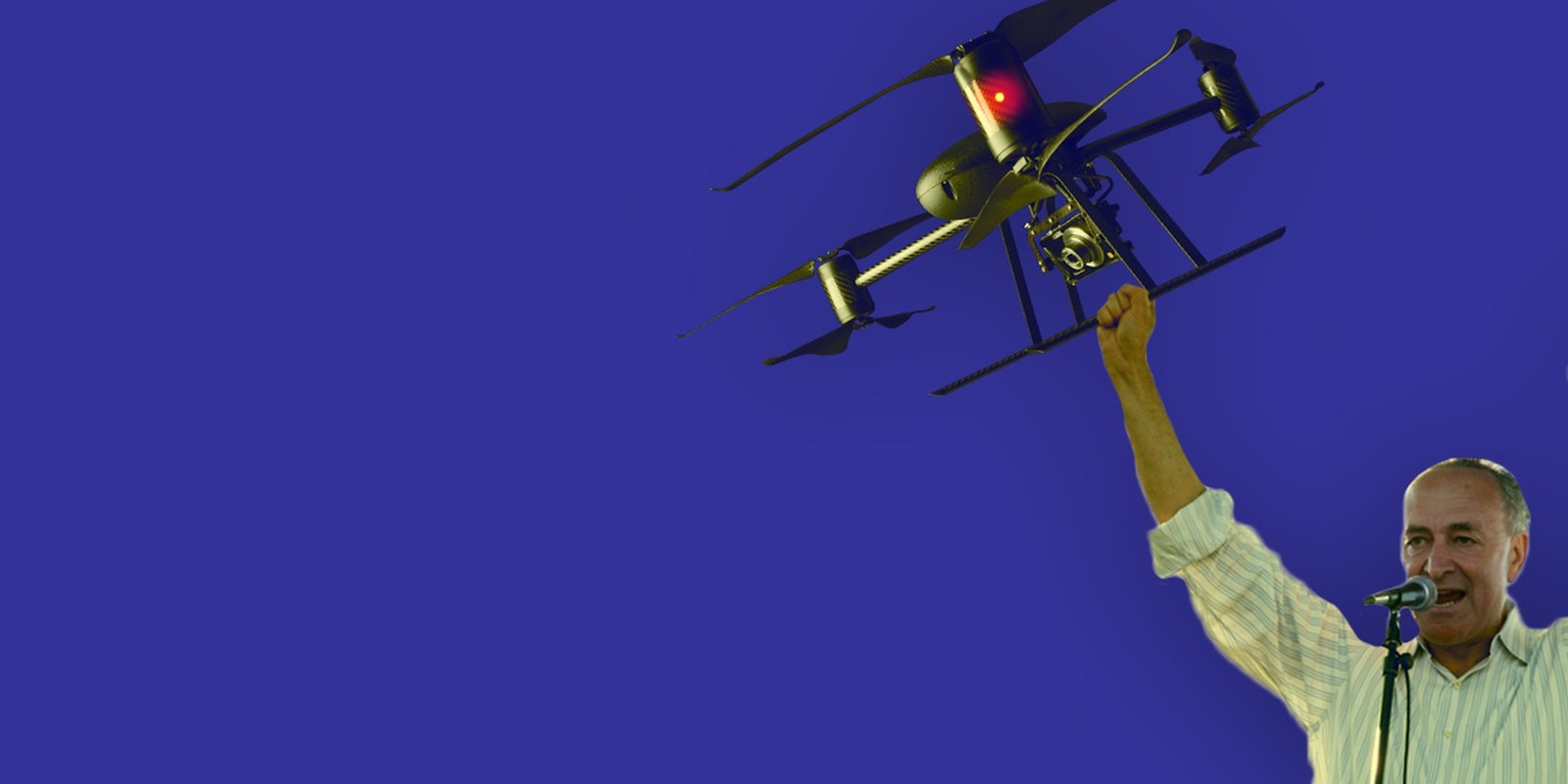America’s drone laws are already a confusing mess—so why not ban them around airports, too?
That’s the gist of new legislation from Sen. Chuck Schumer (D-N.Y.). An amendment to an upcoming Federal Aviation Administration reauthorization bill—the FAA is responsible for much of the U.S.’s mishmash of drone regulations—would require a serious overhaul from drone makers.
In order to keep them out of regulated spaces—Schumer names airports, but it’s easy to imagine dozens of other types of spaces where drones would be unwelcome—he’s advocating manufacturers be required to implement “geo-fencing” or similar technology that would override a controller’s instructions to enter certain airspaces.
But that creates its own set of problems.
“I don’t think anyone believes that idiots flying 2,000 feet above the ground in the approaches to an airport isn’t a bad thing, but blanket bans rarely work and we don’t want to wreck the chance we have to take advantage of the technology,” Matt Wait, a professor of journalism at the University of Nebraska-Lincoln and the founder of the Drone Journalism Lab, told the Daily Dot. “There’s a balance here, and details matter.”
Drone operators, as it turns out, already aren’t supposed to be flying near airports without permission from air traffic controllers. “I think one of the most effective things to do would be the FAA enforcing some of their existing rules,” Wait said.
On the other hand, there’s the matter of Schumer’s claim of “at least seven reported drone sightings by pilots at both JFK and Newark airports” as reason for the legislation. But it’s not clear that drones, or at least the type hobbyists use, which are the type covered by the most lax regulations, can even be a threat to a plane. “Engineers design planes to withstand bird strikes—a five-pound goose, for instance—and most drones are smaller than that,” Wait said.
Besides, if such legislation were to pass, that would leave untold numbers of drones that still don’t have such technology implemented in it. “They’re selling thousands of these each week without [geo-fencing],” Wait said. “All of those would be reliant about updating the firmware on their drones. Which people won’t do.”
Photo via Amanda M Hatfield/Flickr (CC BY 2.0) | Remix by Fernando Alfonso III
